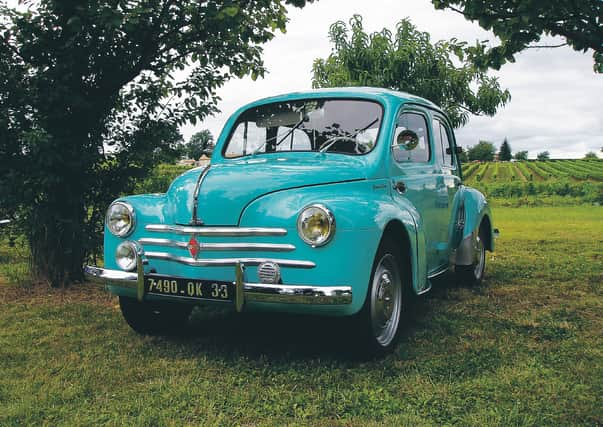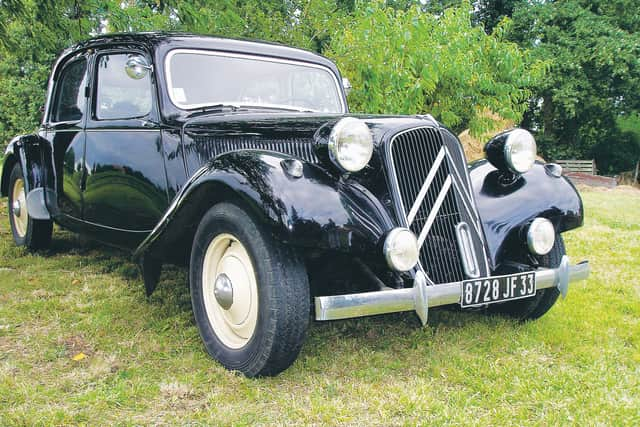Horses for courses: The classic French marques


Country roads and the towns and hills and trunk road were still quiet. The sun was bright, the sky cloudless. For a glorious mental blip I was driving on holiday in France, excited at what I would find. This thrill of meeting the unknown or remembering the sublime is tantalising in the photo-file of nostalgia – a solitary angler in a beret, his old bike propped against a tree, or a Citroën DS in a forlorn garden, sum it up. There was the remote hamlet in Aragon in a Renault Vel Satis and later the glorious tree-lined approach to Cahors and its hearty Malbec wine.
The Vel Satis was a large and very practical executive hatchback but a sales flop. In 2002 on the drive from Bilbao to Cahors to Bordeaux, I didn’t see another. It got a poor media reception and apart from state duties in France went the way of other large French prestigious cars, like its sister, the stupid Renault Avantime, and the marvellous Citroën C6.
Advertisement
Hide AdAdvertisement
Hide AdOn my 90-mile road trip last week I saw two sets of mobile speed cameras on roads with 60mph limits. These roads were wide and straight and with no natural hazards nor much traffic. An invitation to open up, perhaps?


That leaves another and very safe motoring indulgence. It is comfort, something which too much of will not result in a fine. The French are experts. In the decades after the Second World War when our roads were flat, theirs were badly kept and heavily cambered, sloping away from the central crown. Today’s stiffly sprung cars on shallow tyres would be hopeless.
French cars had long-travel and soft suspension, which coped with unruly surfaces and to some extent smothered the bumps and potholes. Citroën’s lolloping 2CV (1949-1990) was remarkable in several ways. It was light and so softly sprung you could easily rock the car side to side but the wheels remained unruffled by cambers or bumps.
The front and rear suspension was connected at each side by a damped cylinder, which pushed the rear wheel down if the front wheel hit a bump. The reverse happened when the rear wheel met the same bump. This kept the ride level. The car’s connected and complicated suspension meant that though the body rolled alarmingly on corners, the wheels stayed planted, coping with undulations and reducing shocks to the passengers or cargo. The small two-cylinder, nine-horse-power engine was air-cooled and could manage 40mph: With 33 horse power in its later years, a 2CV would reach 70mph.
Citroën had created a basic, affordable, practical car for the rural French but its looks charmed us all. The only 2CV in the family met one pothole too many and twisted its chassis. A new chassis was available but in this case the insurers just paid the car’s value. Today, with the Deux Chevaux in demand, a chassis replacement would have made economic sense.
The model was preceded by the Traction Avant, usually called Light 15 in the UK. It is Maigret’s chosen wheels in the TV series. This wide, low-slung, front wheel drive car with a unitary body and chassis was so far ahead of its time. It had independent suspension and was produced between 1934 and 1957. The Traction Avant bust Citroën’s coffers and Michelin owned Citroën from its inception until 1976. Mine, built in right-hand drive in Slough in the early 1950s, black over cherry, had the best “ride” of any car.
This stalwart French limousine with open wings was joined in 1955 by a sleek ellipse of a car. The hugely influential Citroën DS had self-levelling oleo-pneumatic suspension which gave superior comfort and road-holding. Traditional steel suspension springs were replaced by spheres which used gas and oil to dampen the impact from France’s roads. It had Michelin X radial tyres, pioneered on the 2CV DS. Details included selectable ride height, including one for rough roads, another to change a wheel without using a jack, and the parked setting which dropped the car to just above the road surface. You could have swivelling headlamps which followed the steering on twisty roads. The DS was a huge jump into the future.
Much as I admire these old Citroëns, the complicated systems were troublesome and time-consuming for home or professional mechanics. My favourite “period” of French cars are the simpler Renault 4CV and then the Renault 4. The former was inspired by the VW Beetle. It had a rear engine and rear-wheel drive. It had a boot at the front and unlike the Beetle had rear doors. The front doors (like those on the Traction Avant) were hinged at the rear, making entry and exit easier.
Advertisement
Hide AdAdvertisement
Hide AdIt was the first French car to sell more than a million, and was built from 1947 to 1961. The first batch were painted sand yellow using paint from Rommel’s Africa corps.
I bought one carelessly unseen, at a hippy happy meal in the Corbières. It was brought over by friends, a brush-painted yellow and blue delight which I ran on French plates. Today they are very collectable, whatever the colour.
Comments
Want to join the conversation? Please or to comment on this article.